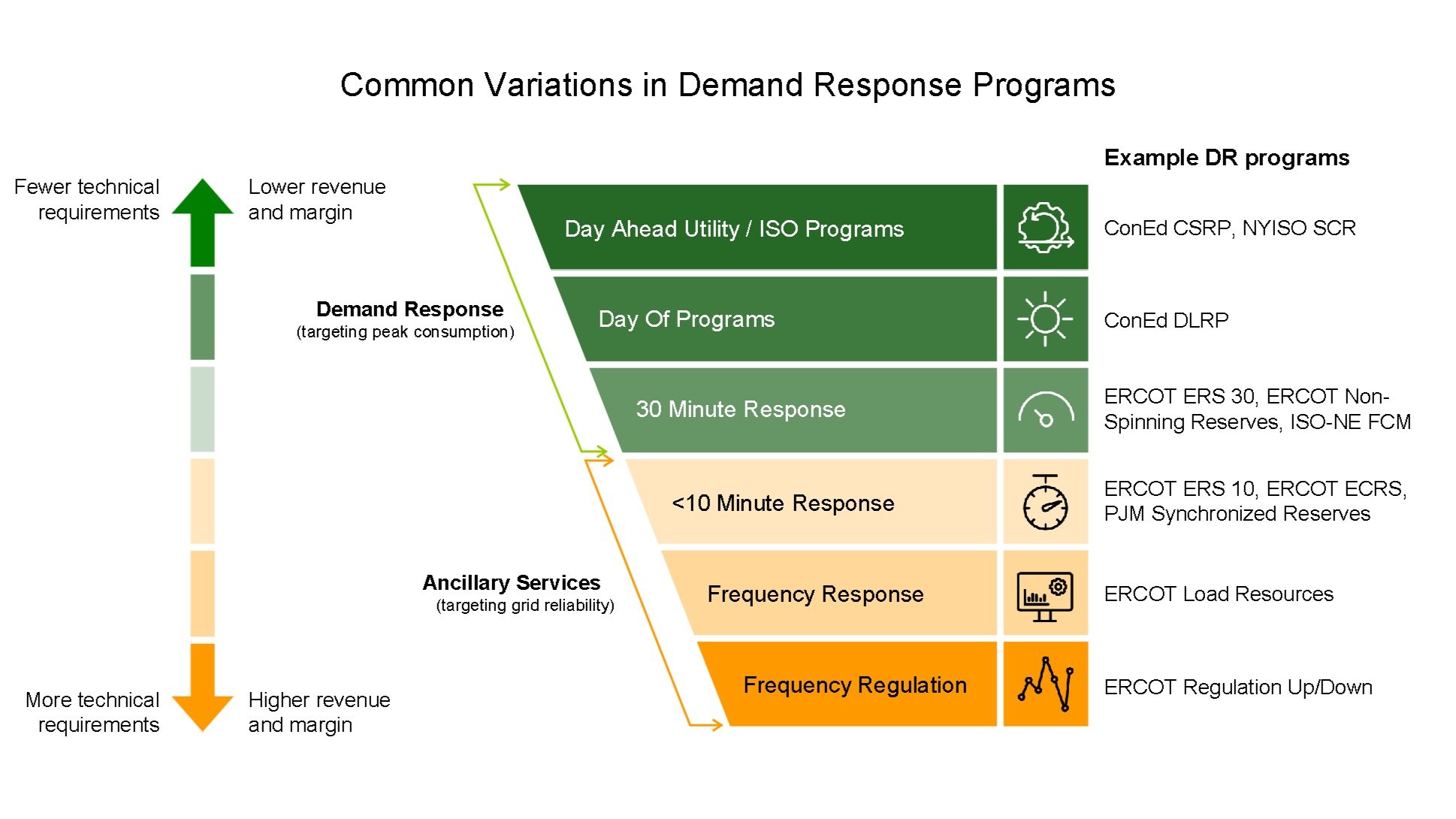Preparing for the Summer Demand Response Season Ahead
In many parts of the country, it’s starting to feel like spring, and that means the summer demand response (DR) season is just around the corner. NASA designated last summer as the Earth’s hottest summer ever recorded, and that type of extreme heat can wreak havoc on our nation’s electrical grid. As a result, more and more markets and utilities are deploying DR programs to mitigate the challenges of increasing demand and grid stress related to warming temperatures.
For commercial and industrial customers, there are potentially significant benefits to participating in DR programs, particularly when electricity demand peaks in the summer months. These benefits can include energy cost savings, payments from the program operator, greater operational stability, lead time to shutdown sensitive equipment in advance of potential outages, and increased grid reliability.
Participating in demand response programs may enable businesses to reduce their electricity costs and earn money by curtailing or shifting their energy consumption during times of high demand when electricity prices are at their peak. This added cash flow can potentially impact the bottom line of C&I operations, allowing businesses to allocate resources more efficiently.
DR programs also contribute to the stability and reliability of the electric grid by alleviating strain during periods of peak demand. By voluntarily reducing electric usage when called upon by grid operators, businesses can help prevent grid overloads and the risk of blackouts or brownouts. Depending on the customer’s fuel mix, participating in DR events can also contribute to sustainability and ESG goals by lowering emissions from energy production and electricity use.
To prepare for the coming DR season, businesses should assess how much flexible energy capacity they have and are able to commit to DR programs. This may include:
- reviewing their energy usage patterns
- identifying opportunities for energy efficiency improvements
- upgrading or performing necessary maintenance on HVAC systems
- optimizing equipment operation schedules
- assessing flexible capacity at other properties that could be applied to DR programs
These activities can help businesses reduce overall electricity consumption and enhance responsiveness during DR events. For example, Blueprint Power helped a real estate customer use a variety of these approaches to increase DR revenue by 250% across their portfolio.
DR programs can vary widely, and Blueprint Power can help businesses identify, enroll in, and prepare for participation in the DR programs available to suit their flexible capacity and energy use profile. This can potentially have a notable impact on a business’ earning potential. For example, Blueprint Power helped a corporate campus improve revenue and bill savings by 24x in 2 years versus a prior vendor’s approach by helping the customer identify and enroll in more DR programs that could leverage its flexible energy capacity and capture more bill savings.
*Illustrative examples. Programs, applicability and outcomes will vary and are subject to change.
Demand response programs are intended to be a win-win for the grid and its business consumers. With demand for electricity increasing at a much faster rate than electrical grid infrastructure is being built, buildings can serve as decentralized, distributed energy resources (DERs) to the grid to help manage grid resiliency, costs, and emissions.
To learn more, visit https://www.blueprintpower.com/flex-monetization.

